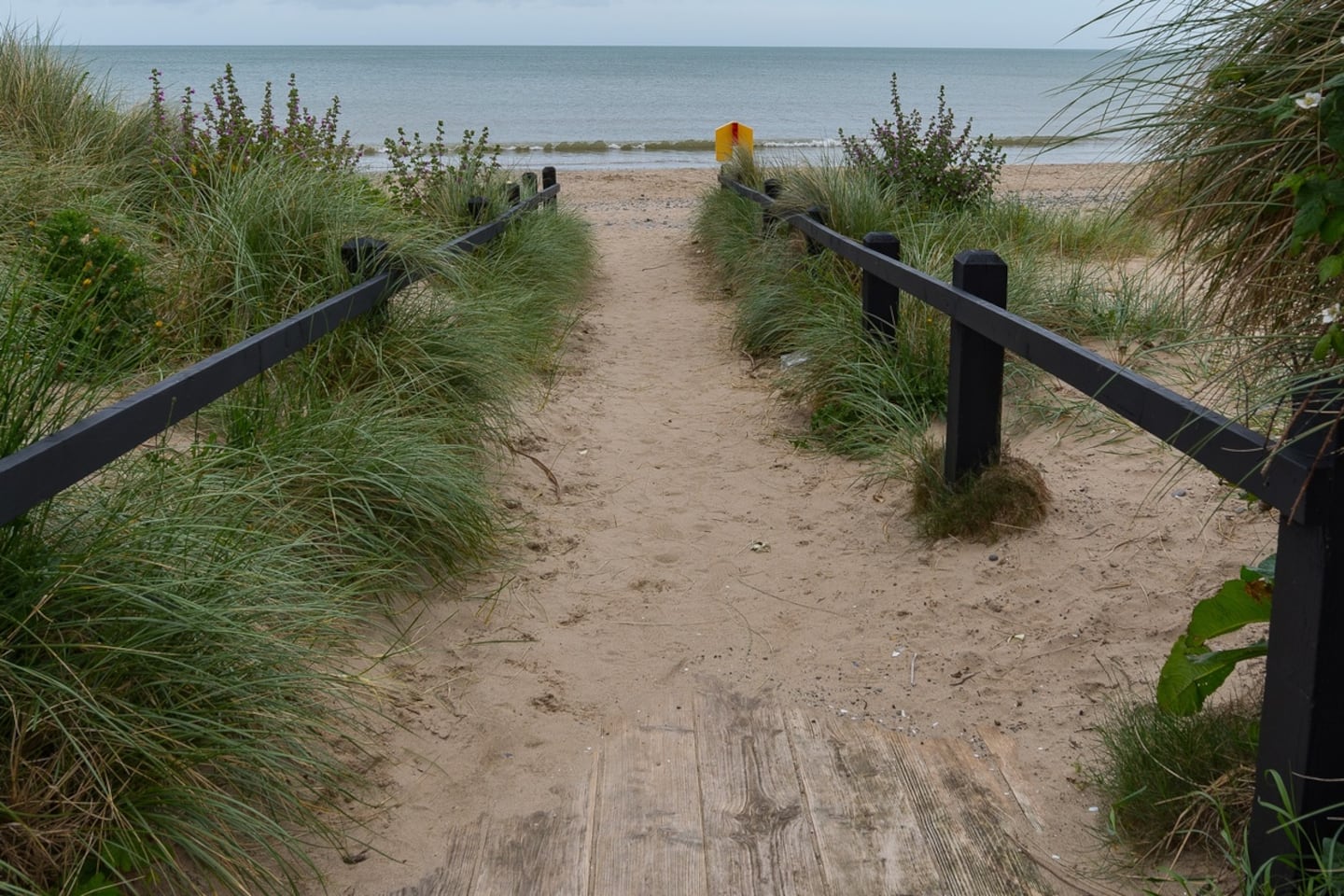Hello again and welcome to another On The Money personal finance newsletter. This week, we’re talking pensions, the one thing no one ever wants to discuss, yet everyone expects to arrive fully funded when they retire.
A recent international survey showed up alarming contradictions among Irish workers. The study, by Swiss researcher GFS, was commissioned by the European insurance association, Insurance Europe, of which Insurance Ireland is a member. It surveyed close to 16,000 people in 15 European countries.
The survey showed that Irish people are reluctant to take the investment risk required to improve their pension position. Instead, they reported a strong desire for safety, with 80 per cent saying they would prefer “the certainty to get back at least what I have invested and possibly an additional sum” over higher returns and the associated risk.
Just one in six Irish respondents said they even looked at investment performance when they invest in a pension – even though investment return and the “magic” of compounding are the keys to precisely the sort of reassurance people want on their retirement income.
READ MORE
They also significantly underestimate how long their pension fund is likely to be required despite readily available information on how long we can expect to live, making it difficult to plan.
Unsurprisingly, then, only one in three Irish people was confident their pensions will maintain their expected standard of living in retirement. On the basis of their survey results, they are right to be.
By all means, cut your risk exposure as you near retirement as you won’t have the years left to recover from any sudden downturn in performance. The majority of us are defaulted on to what are called “lifestyle” plans which do this automatically as we age, moving our investment out of riskier stock market shares and into generally less volatile government bonds and cash.
Of course, you can still get stung, as most people were last year when most investment classes, including bonds, suffered.
But, in general, lifestyling will reduce volatility as you move towards retirement. The corollary, of course, is that your pension fund should be overweight on riskier shares early in your career because, though more volatile, they deliver heftier returns over time and you have the time to recover from temporary investment blips.
Getting back what you invested, the preference of eight out of 10 Irish respondents in that Swiss survey, is a recipe for penury in our later years when the ability to earn additional income can be sharply diminished by both personal circumstances and societal views about hiring older people.
In general, we invest between 5 and 10 per cent of our gross income in a pension fund. If we are particularly “sensible”, we’ll have done this from our early working years in our twenties. More likely, it will be our thirties or even later when we get around to it, if at all – the majority of private sector workers in Ireland are still relying entirely on the State pension and whatever other assets they have.
So we might be saving that modest sum over 30 years, yet we expect it to sustain our standard of living for up to 20 years in retirement. Try living off 10 per cent of your current earnings plus the €13,795 maximum annual State pension – even discounting mortgage payments as they should be gone by then – and see how well that works out.
Choices in retirement
The other worry, if people understand so little about pensions, is how well equipped they are to make the choices required when they retire.
The old days of the “traditional” defined benefit pension, which provided the comfort of guaranteed income in retirement on the basis of the number of years served and your final salary – generally somewhere between a half and two-thirds – is no longer an option for most people outside the public service.
For people in the private sector, the option is now a defined contribution pension – where your pension fund is determined by how much you and your employer (hopefully) invest in it and how those investments perform over the years up to retirement. It is a much more uncertain arrangement, with the pension risk now shouldered entirely by the employee rather than disproportionately by the employer under the old arrangement.
And that uncertainty extends to retirement.
First up, there is a tax free lump sum that people are entitled to take from their pension fund. Some people use this money to pay off outstanding debt or spend on one-off purchases, such as upgrading a home, a car or even taking a big holiday. But, for others, your money is either sitting in a near zero per cent deposit account or you will need to consider investment options to at least preserve and hopefully enhance its value after allowing for inflation and charges.
Thereafter, most people will have one of two choices. They have the option of taking a guaranteed income stream for life by selling their pension fund to an insurance company in return for an annual annuity. Or they can opt to transfer the fund into what is called an Approved Retirement Fund, where it remains invested in the markets.
Both have their strengths and weaknesses though how people who have no understanding of what’s involved in building a decent pension fund in the first place can be expected to make such a decision is asking a lot.
Annuities
The strengths of an annuity are certainty, meaning they are likely to appeal to the 80 per cent of the risk averse Irish in the survey. But that certainty comes at a very high cost as annuity rates are linked to life expectancy, which is rising, and interest rates which have been at historic lows.
The good news is that, for those looking at annuities, the recent rises in ECB interest rates are good news, pushing up rates.
Speaking to The Irish Times in September last year, Mercer’s Brian Codyre noted that a man aged 60 with a pension fund of €100,000 looking for an annuity on a joint life basis – where his partner would receive 50 per cent of his pension after he died – could expect an annuity rate of 3.99 per cent. That translated into a pension of €332 a month for him (or €3,984 a year), with his wife getting €166 a month is she survived him.
That was up on a monthly payment of €240 a month for him back in February 2020 when annuity rates were at a historic low of 2.89 per cent.
Crunching the numbers on the same basis through Irish Life today shows it now offers annuity rate of 4.4 per cent for someone in a similar position – meaning a monthly payment of €362.
Wait for longer and the figures improve. If the man in our example was 65 back in September 2022, all other things being the same, Mr Codyre said he could expect a monthly annuity of €378 a month (an annuity rate of 4.54 per cent against the 3.99 per cent available if he was 60).
Roll forward to today, and the Irish Life annuity calculator says that figure has risen further to €402 a month (at an annuity rate of 4.894 per cent.
Providing for a spouse reduces the sum he will receive: allowing for inflation is even more expensive, with Mr Codyre noting that allowing for annual inflation of 3 per cent per annum would knock a full percentage point off the rate available to the 65-year-old last September – from 4.54 per cent to 3.51 per cent. He noted that you’d need to live 17 years just to make up the difference under the inflation-proofed option.
On the flip side, if you’re a smoker or have other health issues that might mean you are less likely to live as long as other people, the rate you could secure might well be higher.
The other benefit of annuities is that you simply do not have to worry about investment returns, management charges, making choices etc.
The downside is that you no longer control the asset and if you die early in retirement, the insurance company benefits, not your family or estate – although many annuities like the Irish Life ones quoted above do offer minimum payments of five years, at very little cost to you.
And once signed, you cannot alter the terms if, for instance the person for whom you intended to leave a survivor’s pension dies before you. Equally, any change in annuity rates available – positive or negative – will not affect your payment.
Approved Retirement Funds
People who want to retain control of their fund can opt for the ARF option. This has proved increasingly popular in recent years as the option became available to more and more people and low interest rates made annuities deeply unattractive.
In this case, the money remains invested though you need to make decisions about where it will sit, bringing us back to the reality that beating inflation (and the charges involved in such funds) requires taking on an element of risk in your investment choices.
It is worth getting advice on this because your choice of investment will be determined by all sorts of factors including your age, health, income needs and other assets as well as your comfort with risk.
You can draw down from the fund as you need to as you fund your retirement but there is a minimum threshold. Revenue will automatically tax you on the basis that you withdraw at least 4 per cent of the fund each year if you are 61 or over when you first tap it, rising to 5 per cent once you have turned 71.
If you’re one of the fortunate few to have an invested ARF with a value of over €2 million, that figure rises to 6 per cent.
At those rates, you are not really getting any more income out of your €100,000 fund than the annuity holder unless the ARF is growing.
It also raises the prospect of your fund running out in under 20 years (allowing for management charges) unless you are getting a return on the investment. The longer you live, the harder your ARF has to work to fund your lifestyle.
On the upside, you do retain control of the fund and, if you die while there is still money in it, those funds into your estate.
With the average pension fund in Ireland estimated to be around that €100,000 mark, the figures above give you some idea of what you can expect in terms of retirement income – and the reality is that it will be a helpful add on to your State pension rather than vice versa.
Starting a pension fund early and keeping a close eye on it is the best way to make sure it is meeting your expectations, or adjusting it if not. This is all the more so as auto-enrolment is expected to bring another estimated 750,000 workers into the private pension market – almost all of whom will have no previous interest in or understanding of investment markets.
Opting out of discussing pensions is easy but it is very likely to cost you in the long run.
You can contact us at OnTheMoney@irishtimes.com with personal finance questions you would like to see us address. If you missed last week’s newsletter, you can read it here.
















